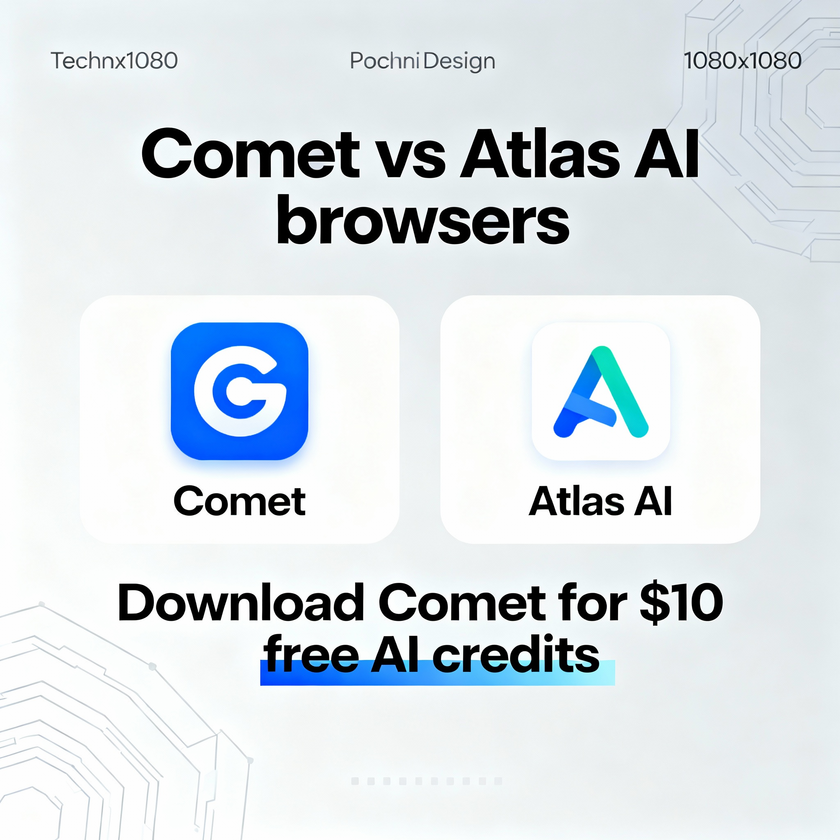Explore answers to common queries on digital privacy, from enhancing email security to navigating social media settings. Empower yourself with actionable insights to fortify your online privacy.
Safeguarding Your Digital Footprint: Strategies for Privacy Protection
In the dynamic landscape of the digital era, safeguarding your privacy goes hand in hand with comprehending the profound impact of metadata on your online presence. This guide empowers you with practical strategies to take control of your digital footprint and ensure the narrative of your personal information remains within your grasp.
Unmasking the Tactics: How Metadata Operates in the Shadows
Before we embark on the journey of protection, let's unravel the tactics metadata employs in the shadows of your digital interactions. Understanding the nuances of how metadata operates is akin to deciphering a code – from the intricate dance of data points to the way they coalesce to form a comprehensive picture.
Join us as we shine a light on these tactics, providing you with the insights needed to fortify your online defenses.
Encryption: The Guardian of Digital Secrets
As we navigate the complexities of metadata, encryption emerges as a stalwart guardian of your digital secrets. From end-to-end encrypted messaging platforms to secure email providers, embrace the power of encryption, transforming your online communications into impenetrable fortresses of privacy.
Your Shield in the Digital Battlefield: Privacy-Respecting Tools
Equip yourself with the arsenal needed to navigate the digital battlefield. This section introduces privacy-respecting tools that stand as vigilant guardians against metadata exploitation. From secure messengers to cloud storage providers championing zero-knowledge encryption, discover the tools that empower you to reclaim control over your digital narrative.
Beyond Metadata: Managing Your Digital Identity
While metadata plays a pivotal role, managing your digital identity extends beyond the realms of data points. This subsection guides you in curating a digital persona that aligns with your privacy preferences. From adjusting social media privacy settings to carefully choosing the platforms you engage with, learn the art of crafting a digital identity that reflects your values while mitigating metadata risks.
Empowering Your Privacy Journey
As we navigate the intricate dance between metadata and privacy, remember that you hold the reins of your digital destiny. This guide has equipped you with the knowledge and strategies to fortify your defenses and navigate the digital landscape with confidence. Embrace the empowerment that comes with understanding metadata intricacies, ensuring that your online presence remains a reflection of your choices and values.
Navigating the Layers: A Closer Look at Metadata Components
Now that we've established the fundamental role of metadata in shaping our digital experiences, let's embark on a journey to dissect its intricate layers. Beyond the overarching concept lies a spectrum of metadata components, each contributing to the rich tapestry of our online presence.
The Chronicles of Timestamps: Unveiling Temporal Signatures
At the core of metadata lies the often-underestimated timestamp – a temporal signature that chronicles the birth and journey of digital data. In this section, we unravel the secrets held within timestamps, exploring how these temporal markers transcend mere chronological records.
Unique Identifiers: The Digital Fingerprint
Digging deeper into the layers, we encounter the concept of unique identifiers – the digital fingerprints that distinguish one user from another. This subsection sheds light on the significance of these identifiers, illustrating how they traverse the digital landscape, leaving behind a trail of interconnected data points.
Contextualizing Location Data: Where Digital and Physical Worlds Converge
One of the most compelling chapters in the metadata saga revolves around location data. Here, we explore the intricate dance between digital interactions and geographic coordinates, shedding light on how location data adds layers of context to our online narratives.
Protecting Your Digital Anonymity: Navigating the Metadata Maze
As we unravel the multifaceted layers of metadata, the need to protect our digital anonymity becomes increasingly apparent. This section offers insights into navigating the metadata maze, empowering you to make informed choices about your online activities.
In the intricate landscape of metadata, every layer adds depth to the narrative of our digital existence. By comprehending the nuances of these components, we gain the power to navigate the digital realm with awareness and intention, ensuring that our online interactions align with our values and preferences.
Traversing the Metadata Landscape: Beyond the Basics
In our exploration of metadata, we've scratched the surface by understanding its fundamental nature and the various types encountered in daily digital interactions. Now, let's embark on a deeper journey, unraveling additional layers that add complexity and depth to the metadata landscape.
Beyond Communication Logs: The Intricacies of Conversational Metadata
While communication logs provide a glimpse into our interactions, the metadata woven into conversations extends far beyond mere text. In this section, we dissect the intricate details embedded in the digital dialogues we engage in.
Visual Stories: Unmasking Metadata in Photos and Videos
As we transition from text-based interactions, the metadata narrative extends seamlessly into the realm of visual content. Photos and videos, seemingly innocent at first glance, carry a hidden trove of metadata.
Document Files: The Metadata Archives
Text documents, spreadsheets, and presentations – the staples of our digital documentation. Yet, beneath the surface of these files lies a rich layer of metadata. This section illuminates the often-overlooked details encapsulated within document files.
Metadata and Privacy: Navigating the Thin Line
As we traverse the diverse landscape of metadata, the implications for user privacy become increasingly evident. This section addresses the delicate balance between the convenience of metadata-driven functionalities and the potential risks of information exposure.
In this expanded exploration of metadata, we've not only delved into the diverse forms it takes but also highlighted the intricate details embedded within each type. By navigating this nuanced landscape with awareness, users can harness the power of metadata while safeguarding their privacy in an ever-evolving digital world.
Riding the Waves: Navigating Metadata's Influence
In our exploration of metadata's impact on user privacy, we've glimpsed the ripples it creates in the vast digital ocean. Now, let's delve deeper into the multifaceted ways in which metadata resonates across various aspects of our online experiences.
Targeted Advertising: Precision in Pixels
Unveiling the curtain on targeted advertising, we uncover the intricate dance between metadata and personalized content delivery. Your digital footprint, shaped by metadata, becomes the compass guiding advertisers to tailor their messages with uncanny precision.
Beneath the Surface: Machine Learning's Metadata Symphony
Beyond the realm of targeted ads, metadata finds itself in the hands of machine learning algorithms, shaping the technological landscape. In this section, we unravel the symphony of metadata and machine learning, understanding how the data points embedded in our digital interactions become the building blocks for algorithmic insights.
The Balancing Act: Risks and Rewards of Metadata Exposure
As we navigate the landscape of metadata's applications, it's crucial to acknowledge the delicate balance between its benefits and potential risks. This section delves into the dichotomy of metadata exposure, discussing the rewards it brings to user experiences while shedding light on the privacy concerns that linger in its shadows.
Empowering Users: Strategies for Metadata Literacy
Armed with knowledge about the impact of metadata, the final segment of our journey focuses on empowering users. We provide practical strategies for [metadata literacy](https://www.eff.org/issues/metadata), equipping individuals to navigate the digital realm with confidence.
Our exploration, we've traversed the nuanced landscape of metadata's influence on user privacy. From the precision of targeted advertising to the transformative role in machine learning, the ripple effect extends far and wide. By understanding and embracing the intricacies of metadata
Fortifying Your Digital Fortress: Advanced Strategies for Metadata Protection
As we embark on the mission of securing our digital footprint, it's essential to delve into advanced strategies that go beyond the basics. In this segment, we'll explore sophisticated methods to fortify your digital fortress, ensuring that your metadata remains shielded from prying eyes.
Advanced Encryption: Beyond the Basics
While secure messengers and encrypted email providers lay a robust foundation for metadata protection, advanced encryption techniques add an extra layer of defense. We'll unravel the complexities of end-to-end encryption, exploring how cryptographic algorithms work to secure your messages and data from interception.
Metadata Redaction Tools: Precision in Privacy
In our arsenal of metadata protection, specialized tools become the unsung heroes. Dive into the world of metadata redaction tools where applications like ExifTool, Metapho, and ExifEraser take the center stage. These tools offer users precise control over the information they share, allowing for the meticulous removal of metadata from various file formats, including photos and documents.
Proactive Privacy Measures: Navigating the Digital Landscape
Beyond the realm of specific tools, adopting proactive privacy measures becomes paramount. This section explores a holistic approach to metadata protection, from optimizing device settings to scrutinizing app permissions.
Staying Informed: The Key to Digital Empowerment
Knowledge is the cornerstone of effective metadata protection. Stay informed about the latest developments in digital privacy, emerging threats, and evolving technologies. By becoming a vigilant digital citizen, you not only protect your own metadata but also contribute to the collective effort of creating a secure online environment.
Safeguarding your digital footprint is a dynamic and evolving process. By incorporating advanced encryption, leveraging metadata redaction tools, adopting proactive privacy measures, and staying informed, you can fortify your digital fortress against the ever-present challenges of the digital landscape. As we navigate the complexities of metadata protection, let these advanced strategies be your compass, guiding you towards a safer and more secure online experience.
Mastering Metadata Redaction: Empowering Your Digital Privacy
In our ongoing exploration of metadata redaction, let's navigate deeper into the realm of tools and techniques designed to empower users in taking control of their online narrative. This user's guide goes beyond the basics, providing insights into advanced applications and strategies for meticulous metadata management.
ExifTool: Unveiling Precision in Data Stripping
At the forefront of metadata redaction stands ExifTool, a powerful and versatile command-line tool. In this section, we unravel the capabilities of ExifTool, exploring its command syntax and functionalities. Discover how this tool allows users to strip metadata from various file formats with surgical precision, ensuring that sensitive information remains confidential.
Metapho: Crafting Privacy in Every Pixel
Moving beyond the command line, we delve into Metapho, an intuitive mobile application for Apple Phones tailored for metadata management in photos. Learn how Metapho empowers users to inspect and edit metadata directly from their smartphones. With its user-friendly interface, Metapho transforms metadata redaction into a seamless and accessible experience.
ExifEraser: Streamlined Metadata Removal for Every User
Our exploration wouldn't be complete without shedding light on ExifEraser, a user-friendly Android mobile app designed for hassle-free metadata removal. Navigate through ExifEraser's intuitive interface, where users can effortlessly delete metadata from their photos before sharing them online.
Best Practices: Maximizing the Impact of Metadata Redaction
As we equip ourselves with these powerful tools, it's essential to delve into best practices for maximizing the impact of metadata redaction. From regular audits of your digital content to staying informed about updates in metadata standards, this section offers a comprehensive guide on integrating metadata redaction seamlessly into your digital routine.
Conclusion: Empowering Your Digital Narrative
In conclusion, mastering metadata redaction is not just about using tools; it's about understanding their nuances and integrating them into your digital habits. Whether you opt for the precision of ExifTool, the user-friendliness of Metapho, or the streamlined experience of ExifEraser, each tool contributes to a collective effort in safeguarding your digital privacy. Empower yourself with knowledge, explore these tools, and take charge of your digital narrative in an era where privacy is paramount.
Exploring Privacy: Answers to Your Digital Dilemmas
Welcome to the next installment of our exploration into digital privacy. In this section, we delve deeper into common queries, providing comprehensive answers and actionable insights. Your journey towards safeguarding sensitive information continues with a focus on practical strategies and considerations.
Q1: What Steps Can I Take to Enhance Email Privacy?
A1:Email privacy is a critical aspect of digital security. Consider opting for encrypted email providers that implement robust zero-knowledge encryption. This ensures that your communication remains confidential, minimizing the transmission of metadata. Additionally, be cautious about the information you share in emails, avoiding unnecessary details that could compromise your privacy.
Q2: Navigating Social Media Privacy Settings
A2: Social media platforms are hubs of personal information, making privacy settings crucial. Regularly review and adjust your privacy settings to control who can access your content. Be mindful of the information you share, considering the potential implications of metadata exposure. Embrace the principle of least privilege, sharing only what is necessary for your intended audience.
Q3: Are Virtual Private Networks (VPNs) Effective in Enhancing Privacy?
A3: VPNs play a significant role in enhancing digital privacy by encrypting your internet connection. They are particularly useful when accessing public Wi-Fi networks, preventing potential eavesdropping. However, it's essential to choose reputable VPN services and stay informed about their privacy policies. While VPNs offer an additional layer of security, they are not a one-size-fits-all solution, and users should adopt a holistic approach to digital privacy.



















